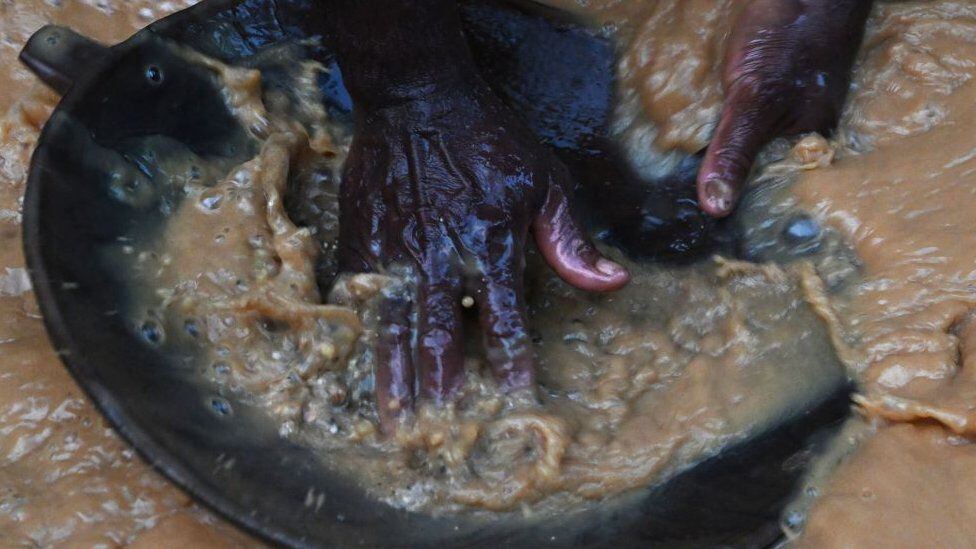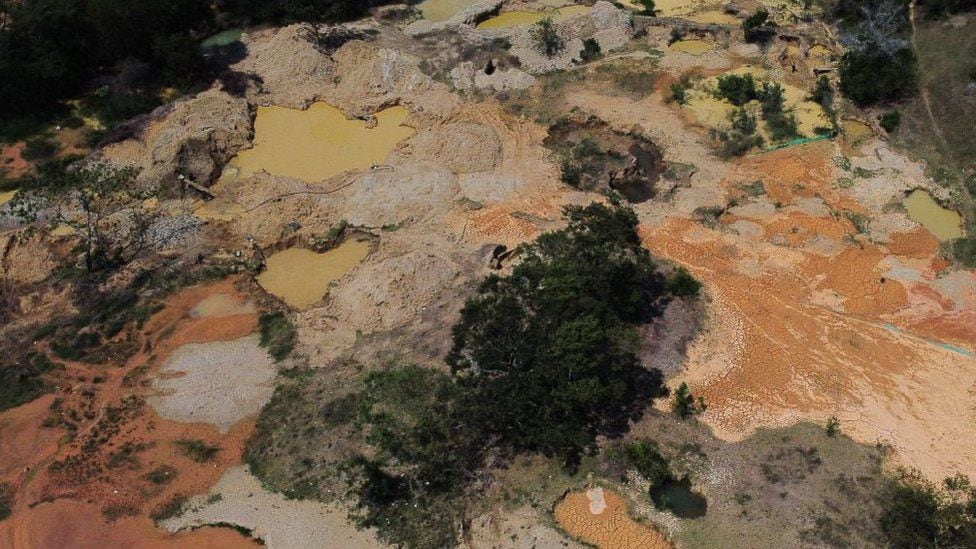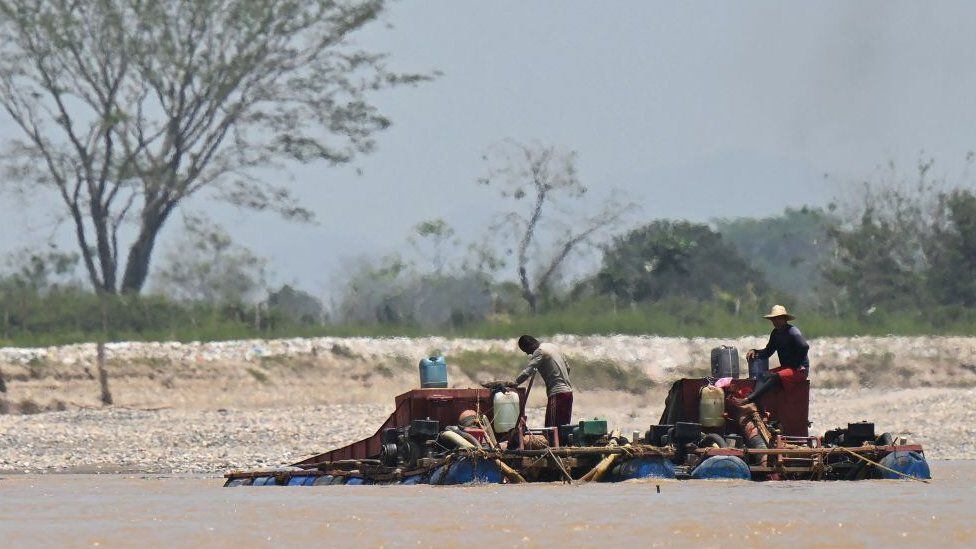in much of Colombiathe first references that come to mind when talking about Brazil are samba or soccer.
But in the Bajo Cauca region, located in the north in the Department of Antioquia, another issue dominates the imagination of Brazilians: illegal mining.
LOOK: The attack on the Russian journalist responsible for uncovering the torture and murder of LGBT people in Chechnya
Bajo Cauca is made up of just six municipalities, with a population of approximately 300,000 people.
However, you are responsible for more than 50% of gold extraction in Colombia.
In 2005, two Brazilians operating in Serra Pelada in Brazil brought with them a series of equipment that enhanced illegal gold mining.
In March of this year, the governor of Antioquia, Aníbal Gaviria, stated that the damage caused by mining is responsible for the “greatest environmental disaster” in the Department’s history.
Antioquia has lost more than 500,000 hectares of forest in the last 20 years. In Bajo Cauca alone, 60,000 hectares have been deforested and more than 200,000 trees felled.
Experts point to illegal mining as one of the two major culprits in this scenario.
The implementation of equipment such as the so-called “Brazilian Dragons” was a fundamental part of the worsening of environmental conditions.
In addition, there is still the use of calls “dredges”metallic equipment generally made by hand and used in the rivers of the region that promote sedimentation.
On social networks, BBC News Brazil found profiles that teach how to produce the material.
Daniel Bonilla Calle, professor of international business at the Ceipa University Foundation, affirms that “Brazilians are more specialized in the use of machinery and dredges. Before there was not so much technology in the extraction of gold”.
A researcher who has studied the impacts of illegal mining in the region—and asked that his identity not be used—also noted that the Brazilian teams aggravated the damage in the region.
“In 2005 I began to listen to the theme of the dragons, which were a kind of reengineering where they optimized the extraction of the mineral and a backhoe was not so necessary. Thus, the extraction became more competitive, since up to 20 times more quantity was moved of land,” he said.
The “school” of Serra Pelada
Between More than 20 Brazilians arrested in the last ten years for the illegal exploitation of gold in Bajo Cauca, two had worked in the past in the historic Serra Pelada mine, in the state of Pará.

These were pointed out by the Colombian justice as some of the main responsible for the implementation of new mining techniques from 2005.
In 2016, one of them was arrested and pointed out by the local police as the creator of the “dragons”.
Among the charges were conspiracy to commit a crime, environmental contamination, damage to natural resources and violation of borders for the exploitation of resources. So far he is in custody.
The second individual died of covid-19 while the case against him was pending, with similar accusations. They are also accused of intensifying mercury contamination in Bajo Cauca.
lucrative business
Bonilla Calle recalls that, starting in the 2000s, the rise in international gold prices boosted exploration.
The metal comes from a historic price advance, and is trading near its current highs, around US$2,000 a troy ounce listed in New York. In 2015, the price was around US$1,000.
In some towns in the area, the percentage of the population whose income is directly linked to gold extraction exceeds 50%, the professor points out.
The most recent report of the Comptroller General of the Republic in Colombia indicates that Nearly 63% of the 53 tons of gold that the country exploits annually are the result of illegal mining.
As a result, 85% of metal exports in the country do not have a legal origin, according to the publication.
Attraction for criminal groups
The profitability of illegal mining has drawn the attention of criminal groups. Bonilla Calle points out that Bajo Cauca is an isolated region and that a violent control of businesses has begun.

The call Clan del Golfo is the one that currently controls mining. It is an armed organization with influence in various illegal businesses in Colombia.
“There is a limited impact of the actions of the State. It is a remote region, which is six hours from Medellín, for example,” said the professor when mentioning the capital of Antioquia.
Some equipment used in mining can cost up to $500,000 and the resources of criminal groups are considered important to guarantee access to such media.
In addition, Bonilla Calle affirms that organizations such as the Clan del Golfo offer protection to illegal miners. Typically, the criminal group gets part of the gold revenue, including frequent extortion.
In March of this year, a large strike affected the Bajo Cauca region for weeks, a movement that the Colombian government accuses of having been encouraged by the Clan del Golfo.
The protesters demanded measures to formalize mining in the regiona topic that has been discussed for a long time.
For the researcher who asked to preserve his identity, there are currently mechanisms to seek the legalization of extractions, but the State is unable to monitor the gold that leaves Bajo Cauca.
“If the State does not control the extractive process, it’s hard, since exploitation is practically dominated by criminal and illegal groups. It is necessary for the State to be present and verify this whole process,” he says.
troubled relationship
The relationship between Brazilians and Colombians has never been the easiest. Wilmar Alexander Cano is a professor at the University of Antioquia and studies this type of movement in the country.

“Historically, Migrations for mining have generated many conflicts. The owners are locals who control the territory and agreements are normally sought for exploitation,” he says.
However, many times some type of agreement is signed with local actors, and includes counterparts for a region with little state presence.
“They provide income to cities and, sometimes, infrastructure such as schools,” Cano points out.
Damage reduction
In some places, Bajo Cauca has also had some containment of damages related to illegal mining and one of the most notorious is the use of mercury, which plagued the region for decades.
Since 2014, the government implemented strategies to reduce the use of the material by industrial companies and artisanal miners.

“I’ve noticed that many are no longer using mercury. It’s a practice that has slowly been declining. If you start addressing it, it may improve, but it doesn’t go away overnight. There are the results of years and years away. of control”, evaluates the expert who prefers not to reveal his name.
This specialist believes that the solution involves greater state investment.
“More investment is needed in education and more coverage for vulnerable families.”
In his opinion, this will allow the population to see “mining as an option, but not the only one.”
Source: Elcomercio
I am Jack Morton and I work in 24 News Recorder. I mostly cover world news and I have also authored 24 news recorder. I find this work highly interesting and it allows me to keep up with current events happening around the world.

:quality(75)/cloudfront-us-east-1.images.arcpublishing.com/elcomercio/4Y7LSOAE2VERFFLY5ZX32AWBCY.jpg)

:quality(75)/cloudfront-us-east-1.images.arcpublishing.com/elcomercio/WU5XZWCGH5EVFE5F7NBUDWIAM4.jpg)
:quality(75)/cloudfront-us-east-1.images.arcpublishing.com/elcomercio/XWTKFURINRETFLLS2IWH4IEXJQ.jpg)

:quality(75)/cloudfront-us-east-1.images.arcpublishing.com/elcomercio/SWIOX53ERFFILFIZULWDL7XB2Y.jpg)
